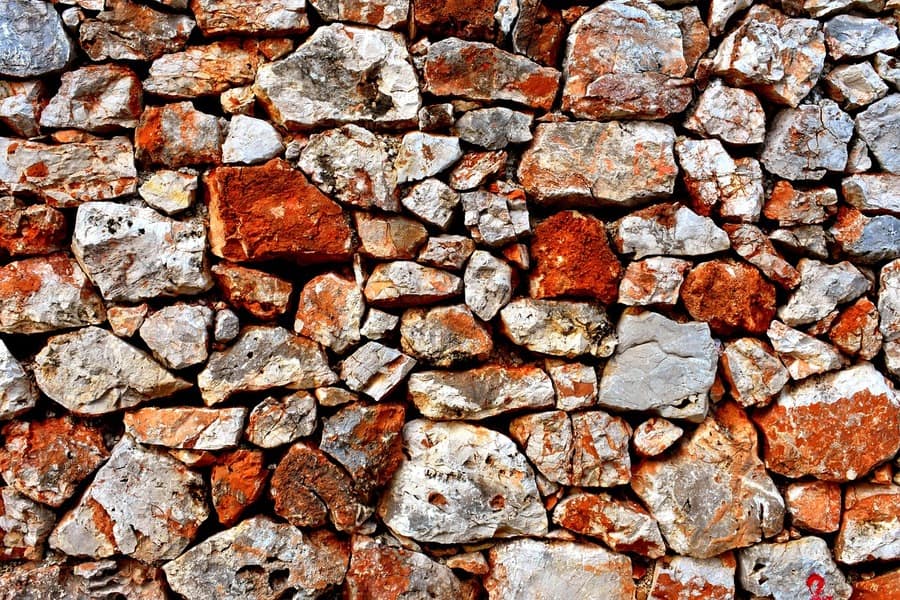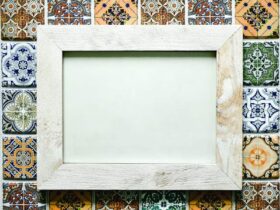Yes, slate is a natural stone. It is a metamorphic rock of sedimentary origin, composed primarily of quartz, sericite, and minerals of the chlorite group.
Slate is a versatile and aesthetically pleasing natural stone that has been used for centuries, primarily as a roofing material. It is known for its unique texture, appearance, and durability, as it is resistant to cracks, scratches, breaks, and chips.
Slate is mainly found in England, Wales, Spain, and the United States, with other significant sources in Portugal, Italy, Germany, and Brazil. Although there are synthetic alternatives available in the market, natural slate remains the only kind of slate. We will explore the features, uses, and types of natural slate.
What Is Slate?
Slate is a natural stone that is derived from sedimentary rock shale or volcanic ash. It is a dense, fine-grained, and foliated metamorphic rock that has been used for centuries in roofing and flooring applications. Although there are synthetic alternatives available, natural slate remains the only type of slate.
Definition And Composition
Slate is a natural rock of fine-grained and foliated metamorphic origin. Its formation takes place through low-grade metamorphic processes involving shale, clay, or volcanic ash. The main components of slate are quartz, sericite, and chlorite group minerals. The mineral content of slate determines its texture, appearance, and durability. Some slates contain additional minerals like mica or feldspar that may alter their color and texture.
Uses
Slate is a remarkably versatile natural stone commonly used for roofing, flooring, wall cladding, and landscaping purposes. It is highly durable, resistant to extreme weather conditions, and requires minimal maintenance. Slate roofing tiles are preferred for their rust-resistant properties and unique appearance. Flooring made of slate is ideal for high-traffic areas due to its resistance to scratches and breaks. Slate is also a popular material for interior and exterior walls, as it adds a warm and distinctive feel to any space. The stone’s natural durability makes it a perfect option for landscaping projects such as garden paths, patios, and pool surrounds.
In conclusion, slate is a naturally occurring and versatile rock composed of minerals such as quartz, sericite, and chlorite. Its durability, resistance to weather extremes, and low maintenance requirements make it an excellent choice for various applications from roofing tiles to landscaping projects. As a natural stone, slate provides a unique texture and appearance that adds warmth and character to any space.
Is Slate A Natural Stone?
Slate is a natural stone as it is a metamorphic rock that is derived from shale or volcanic ash. It is a dense, fine-grained, and foliated rock that has been used for centuries as a roofing material. While synthetic alternatives have appeared in recent years, natural slate remains a popular choice for its unique texture and appearance.
Slate as a Natural Material
Slate is a natural stone and an excellent choice for projects that involve durability, such as flooring and roofing. By using natural slate, you can rest assured that you have chosen a material that is both long-lasting and authentic.
Slate is a metamorphic rock that forms when sedimentary rocks, like clay or shale are put under extreme heat and pressure. This procedure causes profound chemical and physical changes to the structure and makeup of the rock. It is mostly composed of quartz, sericite, and minerals of the chlorite group.
One of the most significant advantages of slate as a natural material is its durability. It has been widely used for roofs because it can last for more than a century with proper care and maintenance. Additionally, slate is resistant to scratches, breaks, and chips, making it ideal for high traffic areas.
Artificial and Synthetic Alternatives
While natural slate has been the traditional choice for centuries, several artificial alternatives provide the same look and feel of natural slate at a lower cost. However, it is essential to keep in mind that these alternatives do not have the same durability as natural slate.
Artificial and synthetic materials that imitate slate include vinyl, fiberglass, and asphalt. While they are less expensive than natural slate, they are not as authentic or durable.
In conclusion, slate is a natural stone that has been widely used for centuries. It is durable, versatile, and can last for over a century. Although artificial and synthetic alternatives provide the same look and feel, they do not have the same durability as natural slate. When choosing materials for your projects, it is essential to consider the longevity and authenticity of natural slate.
Where Is Slate Found?
Slate is a natural stone and a metamorphic rock, mainly composed of quartz, sericite, and minerals of the chlorite group. It is found naturally in various parts of the world, including Portugal, Italy, Germany, Brazil, Wales, Vermont, New York, Virginia, and Pennsylvania.
Where is Slate Found?
Slate is a type of natural stone that is formed through a process of metamorphism of sedimentary rock. It is known for its unique texture and appearance, making it a popular choice for various construction and design projects. If you are wondering where slate is found, here are some key locations you should know about:
Europe
One of the major sources of slate in Europe is Wales, where it has been mined for over 1,000 years. Welsh slate is prized for its high quality and durability, and it has been used for everything from roofing tiles to billiard tables. Other significant slate sources in Europe can be found in Portugal, Italy, and Germany.
United States
In the US, slate is found abundantly in several states, including Vermont, New York, Virginia, and Pennsylvania. Vermont is particularly well-known for its slate quarries, which produce some of the finest slate in the country. American slate is often used for roofing, flooring, and other decorative purposes.
Overall, slate is a natural stone that can be found across the globe, but some regions are known for producing higher quality or more abundant supplies than others. Whether you are looking for construction materials or decorative elements for your home or business, slate is a versatile and durable option to consider.
Advantages And Disadvantages Of Slate Flooring
Slate flooring is a popular choice for homeowners due to its natural beauty and durability. As a natural stone, slate has a unique texture and appearance that is highly sought after. However, it can be quite difficult to install and maintain, which can be considered as disadvantages.
f mineral grains such as quartz, mica, and chlorite, which give it its distinctive look. In addition to its aesthetic value, slate is often used as a flooring material due to its durability, resistance to water damage, and ease of maintenance. In this section, we will discuss the advantages and disadvantages of slate flooring, focusing on strength and durability, maintenance, and cost.
Strength And Durability
One of the major advantages of slate flooring is its strength and durability. As a metamorphic rock, slate is formed from layers of sedimentary rock that have been subjected to high pressure and temperature over time. This gives slate its characteristic strength and resistance to heavy foot traffic, making it a popular choice for high traffic areas such as kitchens and entryways.
Moreover, slate is a highly resistant material that is resistant to scratches, cracks, and chips. It is also moisture-resistant, making it an ideal choice for bathrooms and other wet areas. As long as slate floors are sealed correctly, they can last for many decades without showing signs of wear and tear.
Maintenance And Cost
While slate flooring is highly durable, it does require some maintenance to keep it looking its best. One of the main maintenance activities is sealing- It is recommended to seal slate floors every one to two years. Sealing helps to protect the floor from stains and water damage, as well as preventing the growth of mold and mildew. Therefore, sealing slate flooring could help prolong its lifespan, while also making it easier to clean.
In terms of cost, slate is generally more expensive than other flooring materials such as vinyl or carpet. However, it is important to consider the long-term cost-effectiveness of slate floors. Due to its durability and longevity, slate is likely to require fewer replacements over its lifespan than other materials, so the cost might balance out over time. Plus, it adds value to your home at a specified cost.
In conclusion, there are many advantages and disadvantages of slate flooring. While it is a beautiful and durable material, it does require some maintenance and initial investment. However, with proper care, it can last for many decades, making it an excellent choice for homeowners looking for a long-term flooring solution.

Credit: www.amazon.com
Frequently Asked Questions Of Is Slate A Natural Stone
Is Slate Natural Or Man Made Rock?
Slate is a natural rock material. By definition, slate is a natural material that includes the words “rock” or “stone”. Although there are artificial and synthetic alternatives, natural slate has been traditionally used as a roofing material for centuries. Sourced from various locations, it is a metamorphic rock of sedimentary origin that is composed mainly of quartz, sericite, and minerals of the chlorite group.
Overall, slate is among the strongest natural stone flooring materials, and it is resistant to cracks, scratches, breaks and chips.
Is Slate A Rock Or A Stone?
Slate is a metamorphic rock of sedimentary origin, composed mainly of quartz, sericite, and minerals of the chlorite group. It is typically referred to as a natural stone, often used for roofing, flooring, and wall tile. Although there are artificial and synthetic alternatives available, slate is a naturally occurring material.
Where Is Slate Found Naturally?
Slate is a metamorphic rock of sedimentary origin, mainly composed of quartz, sericite, and minerals of the chlorite group. It is found naturally in different regions worldwide, including Portugal, Italy, Germany, Brazil, Wales, Vermont, New York, Virginia, and Pennsylvania. Natural slate is the only kind of slate, and it is a natural material used in roofing and flooring for centuries due to its strength and durability.
Does Slate Break Easily?
No, slate is not easily breakable as it is one of the strongest natural stone flooring materials, resistant to cracks, scratches, breaks, and chips. Despite needing regular sealing, it is an excellent choice for bathrooms, kitchens, and heavy traffic areas.
Is Slate A Type Of Natural Stone?
Yes, slate is a natural stone that is formed from sedimentary rocks and metamorphic processes. It’s a type of metamorphic rock that has a layered structure and is known for its durability and versatility.
Conclusion
Slate is a natural stone that has been used for centuries as a roofing material and in various construction projects. Despite the emergence of artificial and synthetic alternatives, natural slate remains a popular choice due to its unique texture and appearance, strength, and durability.
It is important to note that while slate is a metamorphic rock of sedimentary origin, it is still considered a type of natural stone. So, if you’re looking to incorporate this versatile material into your next project, you now know that slate is indeed a natural stone.









Leave a Reply